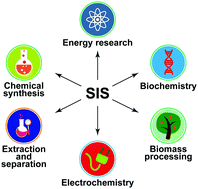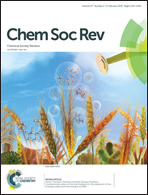“Solvent-in-salt” systems for design of new materials in chemistry, biology and energy research
Abstract
Inorganic and organic “solvent-in-salt” (SIS) systems have been known for decades but have attracted significant attention only recently. Molten salt hydrates/solvates have been successfully employed as non-flammable, benign electrolytes in rechargeable lithium-ion batteries leading to a revolution in battery development and design. SIS with organic components (for example, ionic liquids containing small amounts of water) demonstrate remarkable thermal stability and tunability, and present a class of admittedly safer electrolytes, in comparison with traditional organic solvents. Water molecules tend to form nano- and microstructures (droplets and channel networks) in ionic media impacting their heterogeneity. Such microscale domains can be employed as microreactors for chemical and enzymatic synthesis. In this review, we address known SIS systems and discuss their composition, structure, properties and dynamics. Special attention is paid to the current and potential applications of inorganic and organic SIS systems in energy research, chemistry and biochemistry. A separate section of this review is dedicated to experimental methods of SIS investigation, which is crucial for the development of this field.



 Please wait while we load your content...
Please wait while we load your content...